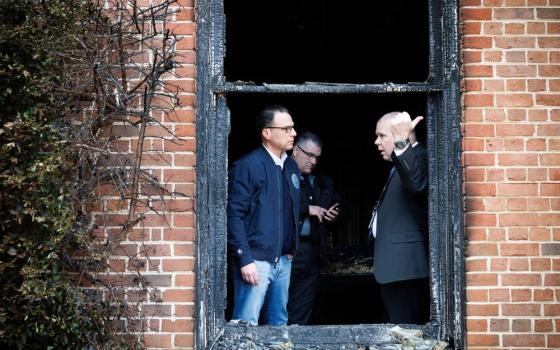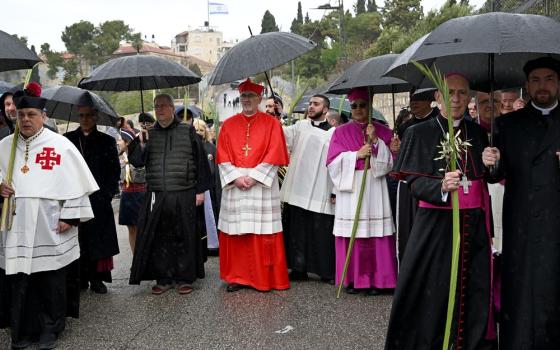Pope Benedict's social encyclical shows, among other things, just how unhelpful the classic left v. right classifications are when assessing the state of contemporary church teaching. We use the terms, and we more or less know what they mean. I speak from the left. George Weigel and Michael Novak speak from the right. But, the dominant thought coming from the pope does not fit easily into those classifications. The interesting debate is not between left and right but between the "Communio" school and both the left and the right.
"Communio" refers both to a theological school and to an actual journal of theology. Joseph Ratzinger was one of the founding editors and the journal came into existence in response to the journal Concilium but it, too, was founded by those who counted themselves among the majority at Vatican II. Communio has little in common with the views of the so-called conservatives at Vatican II, those members of the hierarchy devoted to a stale neo-Thomism that saw no need to integrate the church's teachings with the insights of modern scholarship. Communio theology grows out of the "nouvelle theologie" of deLubac and others, which theology was never just "nouvelle" but is more accurately described by its other name, "ressourcement" theology. It involves a return to the sources, especially to the early church fathers, for insights into the mystery of Christ and its meaning in our lives. Just so, it has a certain pre-Enlightenment sensibility that comes through on page after page of the new encyclical.
Usually, what we mean by left and right in contemporary politics has to do with debates about the meaning of the Enlightenment. Liberals see the Enlightenment project as an on-going project, open to development, dedicated to equality as well as to freedom and willing to change its policies to meet changing times. For example, liberals today do not share Jefferson's concern about big government. Contemporary conservatives tend to invoke a more pristine liberalism, the liberalism of Adam Smith and James Madison, but do not wish to see it updated, or they invoke Burkean worries about liberalism's potential for breaking asunder traditional ways. It is worth noting that in America the views and persons we refer to as neo-conservatives are referred to in Europe as neo-liberals.
Benedict's integralism, which is characterized by a high Christology, can baptize what it finds noble in either liberal or conservative politics and economics, but it starts with Christian doctrine, with the "event of the Incarnation" not with the lived experiences of Christians. This is what makes his views seem other-worldly, but in a good way. The vision of a society and an economy imbued with Christian humanism that he presents in "Caritas in Veritate" is quite different from the vision articulated by either the American Enterprise Institute or the Center for American Progress. This difference of vision, rooted in a different point of departure for analysis, is what makes the church's teachings continually relevant and perpetually disturbing to the contending ideologies of the day. Benedict does not question the motives nor the goals of left or right. He questions their roots and their premises. Just so, in an often stale debate, his voice is fresh and interesting and invites us all to consider our biases.




